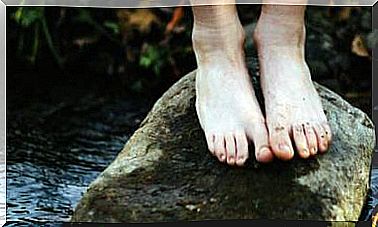A Cure For Silence
Human beings need to create an oasis of calm in the midst of noise to regain inner harmony. In the age of the Internet, noise is anything that knocks on the door of our attention in an uncontrolled way.

A year and a half ago, at the Frankfurt fair, an essay on the silence of a Norwegian author, editor by profession as well as explorer of frozen territories, caused a sensation. There were auctions in many languages of Erling Kagge’s Silence in the Age of Noise , which over 33 short chapters tries to answer three questions: What is silence? Where to find it? Why is it more important today than ever?
The noise we don’t choose
Starting with the third question, in our world of multitasking and permanent connection to the networks, the avalanche of stimuli is so gigantic that it has ended up burying our concentration and our ability to reflect and ask ourselves questions like those posed by the Norwegian.
Just two decades ago, when we were traveling by bus or subway car, we could see a dozen people reading books or newspapers on the way to or from work. Others looked out the window or were lost in thought. They were fully focused on one thing.
Today we will hopefully find one or two readers. The rest of the passage is fiddling with his smartphone, through which a torrent of updates from social networks, whatsapps and emails, among other distractions such as video games, enters – like someone opening a mouth of water. The faces of these people are no longer of placid concentration, like someone navigating inside a novel, but of stress.
We cannot hear the silence because we are hooked on the past, occupied with the present and fearful of the future.
Faced with the myriad of information, posts and comments, your fingers fly over the tiny keyboard trying to get to everything, to answer everything, to attend to everything. They are terrified of missing something important if they don’t.
This exhausting bombardment that we undergo during the journey will continue when we go outside, then at work, when we return home and even while in bed.
Why is there so much noise, when we could do without most of these messages without our life being affected in the least?
The fear of doing nothing
Three and a half centuries ago, the mathematician and philosopher Blaise Pascal already alluded to this question when he said that “man’s unhappiness is based only on one thing: that he is unable to remain still in his room.” By this he meant a place without entertainment or distractions of any kind. A place to think with the only company of silence.
It has been proven that human beings fear this encounter with oneself, perhaps even more today than in Pascal’s time. Proof of this is the study mentioned by Erling Kagge in his book.
Researchers from two North American universities worked with a group of volunteers who offered to spend a certain amount of time alone, sitting in a room without entertainment. The only possible stimulus was to press a button that released a small electric shock that the volunteer himself suffered.
Incredible as it may sound, many of them pressed the button numerous times – some hundreds of times. They preferred that unpleasant and aggressive feeling to not experiencing anything. Perhaps because sitting quietly and thinking seemed more threatening to them.
How to practice inner serenity
In his book Silence , Thich Nhat Hanh presents an easy way out of the noise in which we live immersed. In some way, answering the second question with which we opened this article, to find silence only three simple gestures are necessary : stop, breathe and silence the thought.
On the first question, what is silence, the Vietnamese monk considers it a mistake to believe that silence is an absence of sound, an external anomaly. As those who carry out the three steps he proposes will verify, silence is an inner power that we all have. What happens is that we rarely dare to listen to it. Instead, the “radio” in our mind – Thich Nhat Hanh calls it PSP: thinking without stopping – is emitting noises to cover the silence.
However, as this spiritual master affirms: “Only when the mind becomes silent will we be able to hear who we are and what is our purpose in life, the two keys to harmony and happiness.”
Interpret silence
In 1952, John Cage surprised the world with a composition that consisted of 4 minutes and 33 seconds of silence. To do this, the pianist sat in front of the keyboard before the score with the word Tacet, which indicates that the musician should not play during the stipulated time that gives the piece its name: 4’33 ”.
Some critics think that the intention of Cage was that the spectators listened to the sounds that are produced in a silent room, that would be the hidden and always different score. In any case, this artistic experiment reveals that silence is everywhere, always waiting to be heard.









